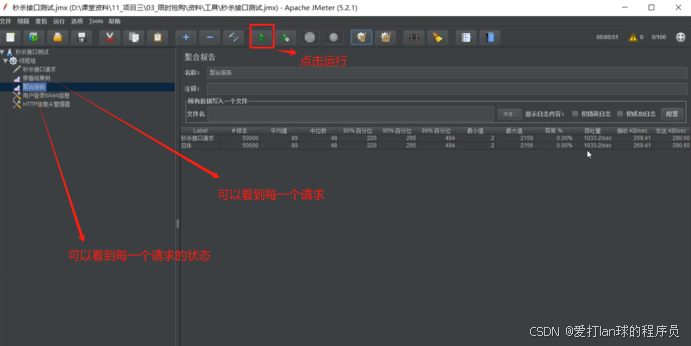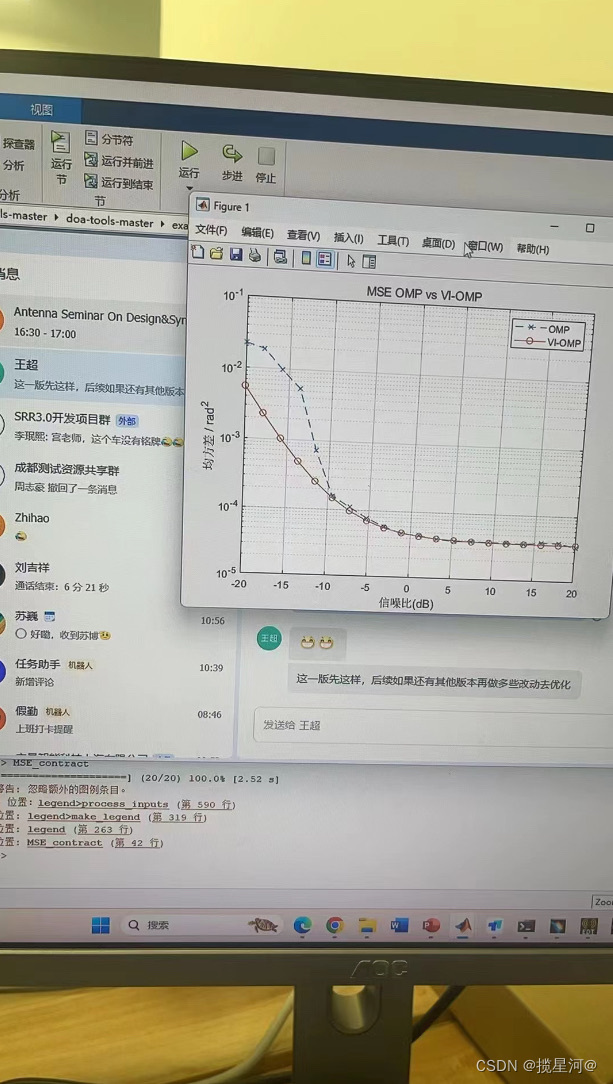我有话说
因为时间和精力原因,本文写的虎头蛇尾了,除了启动调试与程序执行以外只有少量截图演示,只是简单的说明。如果有需要可以联系我,我有时间的话会把演示补上,谢谢理解。
启动调试与程序执行
启动调试并传递参数
| 命令(这三者在功能上没有任何区别 ) | 功能 |
|---|---|
| gdb --args <exe> <args> | 在启动dgb时传入参数 |
| set args <args> | 在启动gdb后,运行程序前传入参数 |
| r/run <args> | 在启动gdb后,运行程序时传入参数 |
测试代码:
#include <iostream>
using namespace std;int main(int argc, char** argv) {cout << "i have "<< argc << " arguments " <<"there are my arguments: " << endl;for (int i = 0; i < argc; ++i) {cout << argv[i] << endl;}return 0;
} 不传入参数:

三种传入参数的方法:



附加进进程
附加进进程主要是用于调试已经启动的进程,在附加进进程后,进程会进入追踪暂停状态(tracing stop / t 状态),当退出gdb时进程会继续运行。
| 附加进进程 | 查看进程id的方法 | |
|---|---|---|
| gdb attach <pid> | ps -ajx | |
| gdb --pid <pid> | ps -aux |
测试代码:
#include <iostream>
#include <thread>
#include <chrono>
using namespace std;int main() {size_t i = 1;while (true) {cout << "这是第 " << i++ << " 次循环" << endl;this_thread::sleep_for(chrono::seconds(1));}return 0;
}测试结果:





逐过程调试和逐语句调试以及退出当前函数
| 命令 | 功能 |
|---|---|
| next/n | 逐过程调试 单步执行(step-over),遇到函数跳过函数 |
| step/s | 逐语句调试 单步执行(step-into),遇到函数进入函数 |
| continue/c | 运行到下一个断点处 |
| finish | 退出当前函数 |
测试代码:
#include <iostream>
#include <string>
using namespace std;void test() {string str = "gdb";str += " welcome";str += " you";cout << str << endl;
}int main() {test();return 0;
}测试结果:



退出调试
| 命令 | 功能 |
|---|---|
| detach | 分离当前正在调试的进程(必须处于启动状态) |
| quit/q | 退出gdb |
测试代码:
#include <iostream>
#include <thread>
#include <chrono>
using namespace std;int main() { cout << "enter main function" << endl;int i = 0;for (;;) {cout << "i have looped " << ++i << " times" << endl;this_thread::sleep_for(chrono::seconds(1));}return 0;
}测试结果:






断点管理
设置断点
| 命令 | 功能 |
|---|---|
| break/b <filename : line> | 在源代码的某一行设置断点,当调试的程序为单文件程序时,可以省略文件名 |
| b <func_name> | 为函数设置断点。如果有同名函数,就为所有同名函数设置断点 如果只想为特定的函数设置断点,就需要添加限定符,以便区分到底是为哪个函数设置断点 |
| rb <regex> | 为满足正则表达式的函数设置断点 |
| b <location> if <expression> | 设置条件断点,当条件成立时断点就会停止进程。常用在循环中,但其他场景也能用 |
| tb <location> | 设置临时断点,该断点只会命中一次 |
| b [+ -] <offest> | 通过偏移量设置断点,当前代码执行到某一行时,如果要为当前代码行的前面某一行或者后面某一行设置断点,就可以通过偏移量来达到快速设置断点的目的 |
测试代码:
#include <iostream>
#include <thread>
#include <chrono>
using namespace std;void test() {cout << "enter test()" << endl;cout << "quit test()" << endl;
}void test(int) {cout << "enter test(int)" << endl;cout << "quit test(int)" << endl;
}void test(double) {cout << "enter test(int)" << endl;cout << "quit test(int)" << endl;
}void test_func() {cout << "enter test_func()" << endl;cout << "quit test_func()" << endl;
}int main() {int temp;cin >> temp;while (temp < 100) {cout << "temp: " << temp++ << endl;this_thread::sleep_for(chrono::milliseconds(500));}return 0;
}# b <func_name># 此时,只会对class中的test_func和test_func(int)两个函数设置断点
b class::test_func()
b test_func(int)


# rb <regex>rb test_func* # 这样就为所有以test_func开头的函数设置了断点

查看、禁用、删除断点
| 命令 | 功能 |
|---|---|
| i b(info breakpoints / info break) | 查看所有断点 |
| i b <id> | 查看某一个断点 |
| disable/enable <id> | 禁用/启用断点 |
| disable <id1 - id2> | 禁用id1到id2号断点 |
| enable once <id> | 启动一次断点 |
| enable delete <id> | 启动断点,在断点被击中后删除 |
| enable count <times> <id> | 启动断点,在该断点被击中times次后自动禁用 |
| ignore <times> <id> | 忽略前times次击中断点 |
| delete / clear | 删除所有断点(clear 无法删除观察点和捕获点) |
| delete <id> | 删除断点 |
| delete <id1 id2 ......> | 删除id1、id2、......号断点 |
| delete <id1 - id2> | 删除id1到id2号断点 |
| delete <id1 - id2 id3 - id4 ......> | 删除id1到id2、id3到id4、......号断点 |
| clear <func_name> | 删除函数内所有的断点,如果存在同名函数,那么所有同名函数中的断点都会被删除 |
| clear <filename:line> | 删除文件中某一行的断点 |
查看、修改变量
查看变量
| 命令 | 功能 |
|---|---|
| show args | 查看命令行参数 |
| info(i) args | 查看函数参数,参数必须要有名字才能查看 |
| i locals | 查看局部变量 |
| print(p) <variable> | 查看变量的值 |
| set print null-stop | 设置字符串的显示规则,查看字符串变量时到''0'停止 |
| set print pretty | 设置结构体显示规则,让结构体中每个字段占一行 |
| set print array on | 设置数组显示规则,让数组中的每个元素各占一行 |
| p <gdb内置函数> | 如 sizeof,strlen,strcpy |
测试代码:
#include <iostream>
using namespace std;void test1(int, double, const char*) {cout << "enter test(int, double, const char*)" << endl;cout << "exit test(int, double, const char*)" << endl;
}void test2(int i, const char* str) {cout << "enter test2(int i, const char* str)" << endl;cout << "exit test2(int i, const char* str)" << endl;
}int main() {test1(114514, 79856.33, "hello");test2(222222, "world");return 0;
}
修改变量
| 命令 | 功能 |
|---|---|
| print/p <variable> = <val> | 修改包括普通变量,成员变量,结构体,类等,可以用来控制程序的执行流程 |
| p <gdb内置函数> | 通过调用gdb内置函数来修改变量 p strcpy(str, "this is string") |

查看、修改内存
# 查看内存
# n 是显示内存的长度,以f和u的读取方式显示n个数据
# f 是显示格式(x是十六进制,d是十进制,u是无符号十六进制,o是八进制,t是二进制,f是浮点,s是字符串)
# u 是单位(b是单字节,h是双字节,w是四字节,g是八字节)
# nfu都可省略 n省略时默认为1,f省略时为你上一次指定的格式(如果没有则为x),u省略时为你上一次指定的单位(如果没有则为w)x /nfu <addr># 修改内存
# var可写可不写,写了是为了避免set与其他单词组成命令
# 如set width就是gdb内置命令
set(var)<addr> = <value>
寄存器的查看和修改
寄存器的查看和修改一般用在无调试符号的程序中(release版本)。
查看寄存器
| 命令 | 功能 |
|---|---|
| i registers | 查看所有通用寄存器 |
| i all-registers | 查看所有寄存器 |
| i r <name> | 查看某一个寄存器 |
当函数的参数小于等于6个时,会将参数放在寄存器中,否则会放入函数栈中。

如果查看的寄存器中的值是一个字符串,可以结合p (char*) <addr> 来查看其中的内容。
修改寄存器
| 命令 | 功能 |
|---|---|
| i line <行号> | 查看行号对应代码的汇编地址 |
| disassemble | 反汇编 |
| set var $pc/rip = <addr> | pc/rip(program counter)寄存器,用来保存程序中下一条要执行的指令,可以通过修改pc/rip寄存器来改变程序执行的流程 |
| p $pc/rip = <addr> | 同上 |


源代码的查看和管理
| 命令 | 功能 |
|---|---|
| list / l | 显示源代码,第一次默认显示10行(前后各5行),之后每次都向后显示10行 |
| l - | 向前显示 |
| list <dir> : <line> | 查看指定文件指定行代码 |
| set listsize <value> | 设置每次显示的行数 |
| list <name> | 查看指定函数的代码,如果有同名函数,就会把所有同名函数显示出来。 可以添加域限定符::来指定显示哪一个同名函数 可以通过添加<dir> : <func name>来限定查看哪一个文件中的函数 |
| search <regex> | 从当前行开始向后搜索第一个满足正则表达式的源代码,搜索到之后按回车表示以当前正则表达式继续搜索下一个 |
| forward-search <regex> | 同search <regex> |
| reverse-search <regex> | 从当前行开始向前搜索第一个满足正则表达式的源代码,搜索到之后按回车表示以当前正则表达式继续搜索下一个 |
| show directories | 查看源代码的查找目录,一般是程序的工作目录和当前所在目录 |
| directory <path> | 设置源代码的查找目录 |


函数调用栈管理
| 命令 | 功能 |
|---|---|
| backtrace/bt | 查看栈回溯信息 |
| frame/f <frame id / frame addr> | 切换栈帧 |
| info f <id> | 查看栈帧信息 |
这些命令用来检查死锁、无限递归等问题。



















